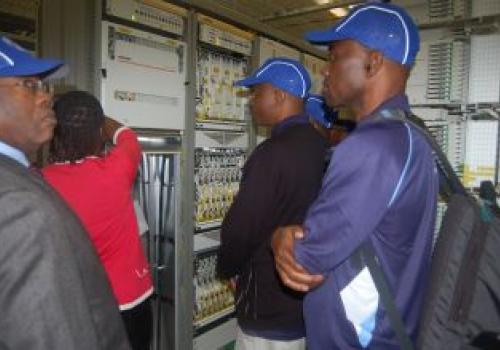The Secretariat of the Southern African Development Community (SADC) has started facilitating and coordinating the convening of a SADC Infrastructure Investment Conference to be held from June 27 to 28 2013 in Maputo, Mozambique. The purpose of the SADC Infrastructure Conference is to lure potential investors into the rolling-out of the Regional Infrastructure Development Master Plan Vision 2027, a 15-year blueprint that will guide the implementation of cross-border infrastructure projects between 2013 and 2027.
This is in accordance with the SADC Regional Infrastructure Development Master Plan (RIDMP) that was adopted by SADC Heads of State and Government at their 32nd SADC Ordinary Summit held in August 2012 in Maputo, Mozambique.
The RIDMP is being implemented over three five-year intervals – short term (2012-2017), medium term (2017-2022) and long term (2022-2027). So far, priority infrastructure projects at a cost of about US$500 billion have been identified and the Maputo Investor Conference is part of the marketing strategy to mobilise resources for their implementation. Other interventions include Road shows that are planned to take place in Asia and Europe.The Master Plan is in line with the Programme for Infrastructure Development of Africa (PIDA), which is a continental initiative of the African Union Commission (AUC), in partnership with the United Nations Economic Commission for Africa (UNECA), African Development Bank (AfDB) and the NEPAD Planning and Coordinating Agency (NPCA).
Following the adoption of the Master Plan, the SADC Secretariat in collaboration with the SADC ministries responsible for the six sectors, namely Energy, Transport, Tourism, ICT and Postal, Meteorology and Water are formulating frameworks to guide the implementation of efficient, seamless and cost-effective transboundary infrastructure networks in an integrated and coordinated manner.In the Energy Sector, the Master Plan is expected to address four key areas of energy security, improving access to modern energy services, tapping the abundant energy resources in the continent and up-scaling financial investment whilst enhancing environmental sustainability.
In the Water Sector, the Master Plan prioritises strengthening institutions, preparation of bankable strategic water infrastructure development projects, increased water storage to prepare for resilience against climate change, increasing access to safe drinking water; and enhancing sanitation services for SADC citizens, facilitating and coordinating the SADC Regional Water Programme. In the sub-sectors of road, rail, ports, inland waterways and air transport networks, the Transport Sector Plan focuses on effective regulation of transport services, liberalisation of transport markets, development of corridors and facilitation of cross-border movement, construction of missing regional transport links, corridor management institutions establishment for Beira, Lobito and North-South Corridors, and harmonisation of road safety data systems.
In the Information Communication Technology (ICT) Sector, the Plan focus is on addressing harmonisation of SADC regional ICT policy and regulatory frameworks, SADC regional ICT infrastructure development, international and regional coordination, coordination and harmonisation of SADC ICT and postal strategic plans and programmes, facilitation of policy dialogue and implementation of the Transport, Communication and Meteorology Protocol. In the Tourism Sector, Plan is geared towards achieving enhanced socio-economic development, facilitating joint marketing of SADC as a single destination, increasing tourism arrivals and tourism receipts from source markets, and developing the tourism sector in an environmentally sustainable manner.
In the Meteorology Sector, the Plan focuses on ensuring availability of timely early warning information relating to adverse weather and climate variability impacts. Another highlight in the Meteorology Sector is the development of a framework for harmonised indicators for the provision of relevant climate forecasting information to facilitate preparations of mitigation measures against droughts, floods and cyclones.

